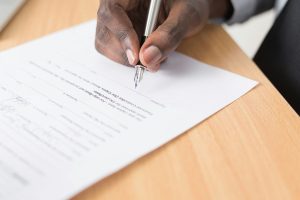The trade of agricultural products with France comes with the inherent risk of non-payment, which can significantly impact exporters financially and legally. Understanding these risks and the available measures to mitigate them is crucial for maintaining a healthy trade relationship and protecting one’s business interests. This article explores a three-phase recovery system designed to tackle non-payment issues, offering a comprehensive approach from initial recovery efforts to potential legal action and litigation outcomes.
Key Takeaways
- A robust understanding of the legal framework and financial health assessment of buyers can mitigate non-payment risks in agricultural trade with France.
- Preventive measures such as stringent credit checks and the use of trade finance instruments are essential to safeguard against non-payment.
- Initial recovery efforts include immediate actions post-account placement, skip-tracing, and persistent communication strategies to recover unpaid agricultural products.
- If initial recovery fails, legal escalation involves transitioning to legal representation and an attorney-led demand for payment, evaluating litigation viability.
- In phase three, a decision to litigate is based on a thorough investigation of debt recovery probability, with a clear understanding of costs, benefits, and collection rates.
Understanding the Risks of Non-Payment in Agricultural Trade with France
The Impact of Non-Payment on Exporters
Non-payment in agricultural trade can severely disrupt exporter operations. Cash flow constraints emerge, stifling growth and investment. Exporters face the dilemma of balancing trust with financial prudence.
- Reputational damage may occur, as reliability comes into question.
- Operational disruptions lead to inventory pile-up, affecting future sales.
- Financial strain increases, potentially leading to insolvency.
Non-payment risks can cascade, affecting not just immediate finances but also long-term business viability.
Strategies to mitigate unpaid bills in agricultural exports include strong buyer relationships, credit checks, trade shock insurance, clear payment terms, and proactive collections. France is a key market with importance on timely payments.
Legal Framework Governing Agricultural Trade
The legal landscape of agricultural trade between the USA and France is complex, yet pivotal for navigating non-payment issues. A robust legal framework ensures that exporters can operate with a degree of certainty and recourse. Key elements include international trade agreements, local regulations, and contract law.
- International trade agreements define the rules of engagement between trading partners.
- Local regulations must be adhered to, ensuring compliance with both French and U.S. laws.
- Contract law governs the creation and enforcement of agreements, crucial for dispute resolution.
It is essential for exporters to have a comprehensive understanding of these legal constructs to safeguard their interests and enhance the predictability of trade outcomes.
Understanding these legalities is not just about compliance; it’s about creating a safety net for your business. The right knowledge can prevent costly disputes and facilitate smoother transactions.
Assessing the Financial Health of Buyers
Before engaging in agricultural trade with French buyers, a thorough assessment of their financial health is crucial. Creditworthiness is the bedrock of trade security. Evaluating a buyer’s financial stability involves analyzing their payment history, credit score, and overall financial performance.
Due diligence is key. It’s not just about the numbers; understanding the buyer’s market position and industry trends can provide valuable insights. A buyer’s liquidity and solvency ratios offer a snapshot of their ability to meet short-term and long-term obligations, respectively.
A robust financial assessment minimizes the risk of non-payment and fosters a trustworthy trade relationship.
Consider the following checklist when assessing a buyer’s financial health:
- Review the latest financial statements.
- Check for any history of late payments or defaults.
- Analyze cash flow patterns and projections.
- Investigate the buyer’s reputation within the industry.
- Monitor the buyer’s credit rating through recognized agencies.
Preventive Measures to Mitigate Non-Payment Risks
Implementing Stringent Credit Checks
In the complex landscape of agricultural trade with France, credit checks are a cornerstone of risk management. They provide a snapshot of a buyer’s financial stability and predict future payment behaviors. Here’s how to implement them effectively:
- Review financial statements: Analyze balance sheets, income statements, and cash flow statements for signs of financial health.
- Check credit scores: Utilize credit bureaus and scoring systems specific to the agricultural sector.
- Examine trade references: Gather insights from other suppliers about the buyer’s payment history.
- Monitor public records: Look for any legal issues that could impact the buyer’s ability to pay.
Credit checks are not just about assessing risk; they’re about building trust with French counterparts. By adapting to local regulations and implementing these checks, exporters can navigate payment processes more confidently. This proactive approach mitigates risks through clear terms and trade finance, leveraging local insights to sustain business operations and growth.
While credit checks are essential, they are not foolproof. Exporters must remain vigilant, continuously updating their assessments to reflect any changes in the buyer’s financial condition.
Utilizing Trade Finance Instruments
To shield against the perils of non-payment, savvy exporters employ a variety of trade finance instruments. Letters of Credit (LCs) stand as a bulwark, ensuring payment upon the fulfillment of contractual conditions. Export Credit Insurance acts as a safeguard, protecting against buyer insolvency or political upheaval.
- Factoring allows immediate cash flow from invoices, transferring the risk to the factor.
- Forfaiting eliminates payment risk on medium-term receivables, typically in capital goods trade.
- Bank Guarantees provide a safety net, assuring performance or payment.
By strategically leveraging these instruments, exporters can navigate the complex landscape of international trade with France, mitigating risks and securing their financial interests.
Drafting Robust Trade Agreements
To shield against non-payment, drafting robust trade agreements is crucial. These contracts serve as the backbone of trust and legal recourse between exporters and importers. A comprehensive agreement includes clear payment terms, dispute resolution mechanisms, and enforceable penalties for non-compliance.
Key elements of a strong trade agreement should encompass:
- Detailed product specifications and delivery timelines
- Explicit payment schedules and methods
- Clauses for late payments and interest on overdue amounts
- Provisions for early termination and consequences thereof
Ensuring these components are meticulously outlined can significantly reduce the risk of non-payment and provide a clear path for resolution should disputes arise.
Phase One: Initial Recovery Efforts for Unpaid Agricultural Products
Immediate Actions Post-Account Placement
Once an account is placed for recovery, time is of the essence. Immediate, proactive measures are crucial to increase the likelihood of payment:
- Send the first notice: A letter is dispatched via mail to the debtor within 24 hours.
- Initiate skip-tracing: Essential to locate the best financial and contact information.
- Engage in persistent outreach: Daily attempts through calls, emails, and texts.
The goal is to establish communication and negotiate a resolution swiftly. If these efforts do not yield results within 30 to 60 days, escalation to Phase Two is the next step.
Persistence and a structured approach are key in this phase. The initial period post-account placement is critical for setting the tone of the recovery process and demonstrating the seriousness of the creditor’s intent.
Skip-Tracing and Investigative Techniques
Once initial recovery efforts falter, skip-tracing becomes pivotal. It’s a methodical hunt for debtors who seem to vanish. The process involves:
- Analyzing databases for leads
- Cross-referencing public records
- Utilizing advanced software tools
Persistence in skip-tracing often uncovers hidden assets or new contact information, crucial for debt recovery.
When traditional communication fails, these investigative techniques are the lifeline to reclaiming unpaid agricultural product debts. They lay the groundwork for any necessary legal action, ensuring that all avenues for payment have been exhausted.
Persistent Communication Strategies
After implementing persistent communication strategies, the focus shifts to evaluating the outcomes. If the debtor remains unresponsive, it’s time to consider the next steps. The Recovery System for Company Funds outlines a clear path forward:
- Daily attempts to contact the debtor for the first 30 to 60 days.
- If these attempts fail, the case advances to legal representation.
The decision to escalate hinges on the debtor’s reaction to persistent communication efforts. A lack of response necessitates a shift in strategy.
DCI’s competitive collection rates come into play when legal action is considered. The rates vary depending on the age and size of the account, and whether an attorney is involved. Understanding these rates is crucial for informed decision-making.
Phase Two: Legal Escalation and Attorney Involvement
Transition to Legal Representation
When negotiations falter, the path to debt recovery enters a new phase: legal representation. Attorneys step in, wielding demand letters and the threat of legal enforcement as tools to underscore the gravity of the situation. This transition marks a clear escalation from amicable resolution efforts to a more formal and assertive approach.
The involvement of legal counsel serves as a pivotal moment, signaling to debtors the seriousness of their situation and the creditor’s intent to pursue all available legal avenues.
The decision to engage legal representation is not without cost. Upfront legal fees, including court costs and filing fees, typically range from $600 to $700. These expenses are necessary to initiate legal proceedings and are indicative of the creditor’s commitment to recovering the owed funds.
Our fee structure is straightforward and competitive, with rates varying based on the age and size of the account, and whether the claim has been placed with an attorney. Here’s a quick breakdown:
- Accounts under 1 year: 30% (1-9 claims) or 27% (10+ claims) of the amount collected.
- Accounts over 1 year: 40% (1-9 claims) or 35% (10+ claims) of the amount collected.
- Accounts under $1000.00: 50% of the amount collected.
- Accounts placed with an attorney: 50% of the amount collected.
Attorney-Led Demand for Payment
Once an attorney takes the helm, the tone of debt recovery shifts. The demand for payment becomes more authoritative, backed by the weight of legal letterhead. The debtor is presented with a clear ultimatum: settle the debt or face legal consequences.
Attorneys leverage their expertise to craft communications that underscore the seriousness of the situation. A typical process may involve:
- Drafting and sending a series of demand letters
- Initiating direct phone calls to negotiate payment
- Setting strict deadlines for debtor response
The goal is not just to recover funds, but to do so in a manner that maintains the integrity of the trade relationship whenever possible.
Should these efforts not yield the desired results, the path to litigation is laid out. The decision to proceed is then in the hands of the exporter, with a clear understanding of the potential costs and collection rates involved.
Evaluating the Viability of Litigation
Before proceeding with litigation, a thorough investigation of the debtor’s assets and the facts of the case is crucial. The decision to litigate hinges on the likelihood of debt recovery. If prospects are dim, case closure is advised, sparing unnecessary expenses.
When litigation is deemed viable, exporters face a choice: advance to legal action with associated costs or continue standard collection efforts.
Litigation entails upfront legal fees, typically ranging from $600 to $700, based on jurisdiction. These cover court costs, filing fees, and the initiation of a lawsuit for the full amount owed.
Here’s a snapshot of potential collection rates:
- Accounts under 1 year: 30% (1-9 claims) or 27% (10+ claims)
- Accounts over 1 year: 40% (1-9 claims) or 35% (10+ claims)
- Accounts under $1000: 50% (1-9 claims) or 40% (10+ claims)
- Accounts placed with an attorney: 50% regardless of the number of claims
Success in litigation is not guaranteed, and if collection attempts fail, the case is closed without further dues to the firm or affiliated attorney.
Phase Three: Decision Making and Litigation Outcomes
Analyzing the Probability of Debt Recovery
Determining the likelihood of recovering unpaid agricultural product debts is a pivotal step in Phase Three. Assessment of the debtor’s assets and case facts guides the recommendation for case closure or litigation. If the probability of recovery is low, closure is advised with no fees owed. Conversely, choosing litigation incurs upfront costs, but offers a path to reclaim the owed amount.
Upfront legal costs are necessary for litigation, typically ranging from $600 to $700. These cover court costs and filing fees, essential for initiating legal proceedings. Should litigation be unsuccessful, the case is closed without additional charges.
Our fee structure is straightforward, with rates varying based on claim age, amount, and volume. For instance, accounts under one year are charged at 30% of the amount collected, while older accounts or those under $1000 incur higher rates. Litigation cases have a fixed rate of 50% of the amount collected.
In navigating non-payment challenges, understanding the financial landscape and potential recovery outcomes is crucial. Phase Three provides clear options, balancing the costs of legal action against the prospects of debt recovery.
Understanding the Costs and Benefits of Legal Action
Before embarking on litigation, a careful analysis of the debtor’s assets is crucial. Assessing the financial viability of recovery is the first step in determining whether to proceed. The costs of legal action, including court and filing fees, typically range from $600 to $700, depending on jurisdiction.
Fee structures for claims are tailored to the volume and age of the account. It’s important to weigh the potential recovery against the upfront legal costs and the percentage of the amount collected if successful. Here’s a breakdown of the fee percentages based on different scenarios:
- Accounts under 1 year in age: 30% or 27% of the amount collected.
- Accounts over 1 year in age: 40% or 35% of the amount collected.
- Accounts under $1000.00: 50% or 40% of the amount collected.
- Accounts placed with an attorney: 50% of the amount collected.
In Phase Three, if litigation is deemed unviable, the case can be closed with no additional cost. However, if litigation is pursued and fails, the upfront costs are non-recoverable, emphasizing the importance of a strategic decision.
Collection Rates and Fee Structures
When considering litigation for unpaid agricultural products, it’s crucial to understand the collection rates and fee structures involved. Decisions hinge on the balance between potential recovery and costs incurred.
Our competitive collection rates are tailored to the volume and age of claims. For instance:
- Accounts under 1 year: 30% (1-9 claims) or 27% (10+ claims) of the amount collected.
- Accounts over 1 year: 40% (1-9 claims) or 35% (10+ claims) of the amount collected.
- Small accounts under $1000.00: 50% of the amount collected, regardless of the number of claims.
- Accounts requiring attorney involvement: 50% of the amount collected.
Legal fees for initiating litigation typically range from $600 to $700, covering court costs and filing fees. If litigation does not result in recovery, clients owe nothing further.
It’s essential to weigh the likelihood of debt recovery against these rates and fees to make an informed decision on whether to proceed with legal action.
Navigating the complexities of debt recovery during the decision-making phase can be daunting. At Debt Collectors International, we specialize in guiding you through Phase Three: Decision Making and Litigation Outcomes, ensuring the best possible resolution for your case. Don’t let uncertainty dictate your next move. Take control and reach out to our team of experts for a comprehensive evaluation and strategic litigation support. Visit our website now to learn more about our services and how we can assist you in turning your receivables into recoveries.
Frequently Asked Questions
What immediate actions should be taken after an account placement for unpaid agricultural products?
Within 24 hours of placing an account, exporters should send out collection letters, conduct skip-tracing and investigative efforts to obtain financial and contact information, and begin persistent communication attempts including phone calls, emails, and texts.
What happens if initial recovery efforts fail in Phase One?
If all attempts to resolve the account fail during Phase One, the case is escalated to Phase Two, where it is forwarded to an affiliated attorney within the debtor’s jurisdiction for legal demand of payment.
What are the potential recommendations after evaluating a case in Phase Three?
The recommendations could be to close the case if debt recovery is unlikely, or to proceed with litigation if there is a reasonable chance of recovering the debt.
What costs are associated with proceeding to litigation in Phase Three?
If litigation is pursued, upfront legal costs such as court costs and filing fees, typically ranging from $600.00 to $700.00, must be paid. These are used to file a lawsuit on the exporter’s behalf.
What are the collection rates if a debt is successfully recovered?
Collection rates vary depending on the number of claims and the age of the accounts. Rates can range from 27% to 50% of the amount collected, with different rates for accounts under a year old, over a year old, under $1000, or placed with an attorney.
If litigation fails, what fees will the exporter owe to the firm or affiliated attorney?
If attempts to collect via litigation fail, the case will be closed and the exporter will owe nothing to the firm or the affiliated attorney.





